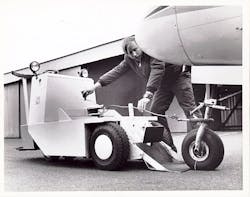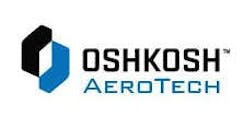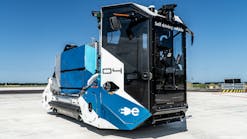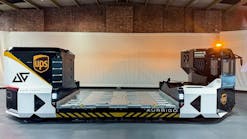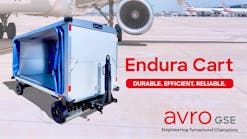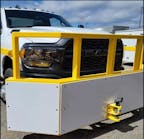Portland, Ore. --- LEKTRO kicked off their 70th anniversary in business at the NBAA Maintenance Managers Conference with a dinner cruise on the Willamette River. This year marks a milestone for the electric aircraft tug manufacturer, who recently took their global leadership of the industry to a new level with their 4,500th tug sold earlier this year.
“We weren’t always a towbarless aircraft tug company, but it seemed fitting to have our kickoff celebration in the same city where our towbarless story began.” Said Henry Balensifer, LEKTRO’s Communications Manager.
In 1945, Wilt Paulson founded Willamette Aircraft and Engine Company in Beaverton, Oregon, to repurpose military aircraft for crop dusting and other civilian uses. Moving his company to Warrenton, Oregon, to be closer to family in 1948 his business quickly morphed into the electric vehicle company now known as LEKTRO.
Under Wilt’s creative genius, LEKTRO developed products for the logging, farming, golf, theme park, and aviation industries. Some of these inventions were the first of their kind, including the first portable wind machine for logging slash burns, the first battery powered vehicle to feed mink, an electric golf cart, and the first towbarless aircraft tug. The last of which revolutionized aircraft towing.
The first towbarless aircraft tug was conceived by Wilt and his friend Sy King, who owned Flightcraft in Portland, now an Atlantic Aviation company. Sy thought that if there was a way to eliminate the towbar and simply lift the nose landing gear aircraft would be spared damage that was otherwise common. They developed the “Airporter” together by turning the LEKTRO mink feeder chassis around so that the steer tires were at the rear of the vehicle, under the operator, and the drive tires at the front, where a hydraulic lift cradle would be attached. The cradle would then lift the nose gear of the aircraft off the ground, transferring the aircraft nose weight onto the tug. This was the world’s first towbarless aircraft tug.
LEKTRO also produced several other vehicles in addition to what it invented over the years such as: custom warehouse vehicles, parade chassis, and forklifts. Unfortunately, many of Wilt’s inventions were not protected and LEKTRO was not large enough to mass produce. As a result, larger companies began producing their versions of Wilt’s inventions and took over the market.
During the early 1980s, Wilt’s health began to suffer and LEKTRO’s finances were in dire straits. His son Eric Paulson, then a sophomore in college, left his studies in 1982 to run the company while his father recovered. By 1985, Eric became president of LEKTRO and assumed ownership. Through skillful negotiations and strategic planning, Eric was able to turn the company around and has since focused the company on electric towbarless aircraft tugs, where it has remained the leader in the industry.
“We had seen larger companies take our inventions and beat us out of the market. … I was determined to not let that happen with the towbarless tug.” Eric Paulson stated.
LEKTRO continued to improve the original “Airporter” design and unveiled several different improved models and chassis series. One of the most revolutionary series, the AP8800, was developed with feedback from Gulfstream. Its low profile enabled it to move large corporate jets from underneath the fuselage, making it easier than it already was to stack cramped hangars.
Over nine different model series have been introduced since the first Airporter, with countless variations within those series.
In 1998, LEKTRO produced its first AP89 series and began to improve its capabilities. LEKTRO was more recently able, through a recent and aggressive OEM certification campaign, to get its largest model, the AP8950SDB-AL-200, certified on all the A320 and B737 families of aircraft down through regional turboprops like the ATR and Dash-8. This has made it the most versatile towbarless airline tug in terms of certified capability.
LEKTRO attributes its single-family ownership as an aspect to its success.
“We don’t answer to shareholders and we don’t cut corners when it comes to our product or customers. The customer comes first.” Balensifer noted.
